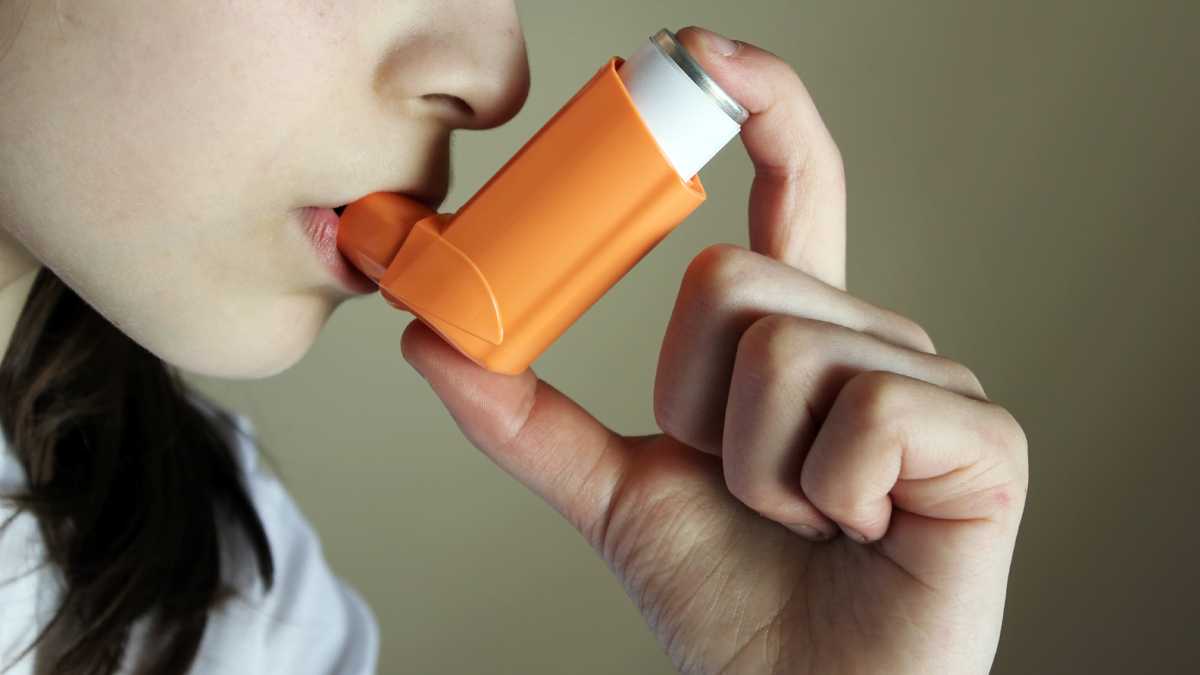New COVID vaccine updates are now available at pharmacies in the Chicago area, including at popular chains like Walgreens and CVS.
Both companies announced the updated formulas were now available at locations nationwide, nearly one week form the announcement on changes to the vaccine's formula.
“Preventive vaccinations are the best way to protect yourself and your family from seasonal illnesses,” Dr. Sree Chaguturu, executive vice president and chief medical officer for CVS Health, said in a statement. “Access to preventive vaccinations is critical to keeping our communities healthy."
Here's what to know:
What's changed in the vaccine?
This fall's vaccine recipe is tailored to a newer branch of omicron descendants. The Pfizer and Moderna shots target a subtype called KP.2 that was common earlier this year. While additional offshoots, particularly KP.3.1.1, now are spreading, they’re closely enough related that the vaccines promise cross-protection. A Pfizer spokesman said the company submitted data to FDA showing its updated vaccine “generates a substantially improved response” against multiple virus subtypes compared to last fall’s vaccine.
Where can I get the new COVID vaccine?
Walgreens announced that "an updated COVID-19 vaccine is now available that targets the current variants of COVID-19." at its stores. Appointments can be made here.
In CVS, doses are also available nationwide. While walk-ins are still being accepted at CVS Pharmacy, people can also make appointments using their digital vaccine scheduler.
Who can get vaccinated and when?
Feeling out of the loop? We'll catch you up on the Chicago news you need to know. Sign up for the weekly Chicago Catch-Up newsletter.
According to the Centers for Disease Control and Prevention, patients ages 6 months and older can receive the updated flu and COVID-19 vaccines, "ideally in September or October, to restore and enhance protection against the most prevalent virus variants currently circulating."
This summer’s wave of COVID-19 isn’t over but the inevitable winter surges tend to be worse. And while COVID-19 vaccines do a good job preventing severe disease, hospitalization and death, protection against mild infection lasts only a few months.
People who are at high risk from the virus shouldn't wait but instead schedule vaccinations once shots are available in their area, Hopkins advised.
That includes older adults, people with weak immune systems or other serious medical problems, nursing home residents and pregnant women.
Healthy younger adults and children “can get vaccinated anytime. I don’t think there’s a real reason to wait,” Hopkins said – although it’s OK to seek the shots in the fall, when plenty of doses will have arrived at pharmacies and doctor’s offices.
The exception: The CDC says anyone who recently had COVID-19 can wait three months after they recover before getting vaccinated, until immunity from that infection begins to wane.
Hopkins, who sees patients at the University of Arkansas for Medical Sciences, calls it vital for more youngsters to get vaccinated this year – especially with schools starting as coronavirus levels are high around the country.
“COVID does not kill many children, thank goodness, but it kills far more children than influenza does,” Hopkins said, adding that teachers, too, should quickly get up to date with the vaccine.
Health authorities say it's fine to get a COVID-19 and flu vaccination at the same time, a convenience so people don't have to make two trips. But while many drugstores already are advertising flu shots, the prime time for that vaccination tends to be late September through October, just before flu typically starts its cold weather climb.
What are the symptoms?
- Cough
- Sore throat
- Runny nose
- Sneezing
- Fatigue
- Headache
- Muscle aches
- Altered sense of smell
- Congestion
- Fever or chills
- Shortness of breath or difficulty breathing
- Nausea or vomiting
- Diarrhea
Recent reports have centered on specific gastrointestinal symptoms and COVID.
Dr. Katelyn Jetelina, a scientific consultant for the CDC and epidemiologist, said "gastrointestinal issues including nausea, vomiting, and diarrhea" have been previously identified as possible symptoms of COVID-19.
"We do not have specific data about the incidence of GI symptoms with the current strains of the virus, but COVID-19 symptoms can certainly differ based on the variant and the individual," Jetelina told NBC Chicago in July.
Last year, a Chicago-area doctor said she's noticed shifts in the most common symptoms her patients reported as the JN.1 variant rose to dominance.
Dr. Chantel Tinfang, a family medicine physician with Sengstacke Health Center at Provident Hospital of Cook County, noted at the time that many of the cases she saw reported less of the fever, body aches and chills, and presented more with sore throat, fatigue and coughing.
"We still see some patients experiencing decreased appetite, a loss of taste or smell. So it kind of depends," she said. "One patient was just very, very tired. Like she couldn't really do much. And that's when you know ... it's different. It's not just coughing and shortness of breath. We still see that though."
She suggested consulting with your doctor if your symptoms don't begin to improve outside of the recommended isolation period.
How long does COVID last?
As for timing, symptoms can last for several days, but in some cases, even longer.
"Some people who have been infected with the virus that causes COVID-19 can experience long-term effects from their infection, known as Long COVID or Post-COVID Conditions (PCC)," according to the CDC.
Such symptoms can last for weeks and possibly even years.
Previous timing guidelines centered around five to 10 days, however.
What to do if you test positive?
In March, the CDC updated its COVID guidelines to mirror guidance for other respiratory infections. Those who contracted COVID-19 no longer need to stay away from others for five days, the CDC said, effectively nixing the five-day isolation recommendation.
People can return to work or regular activities if their symptoms are mild and improving and it's been a day since they've had a fever, but the CDC still recommends those with symptoms stay home.
"The recommendations suggest returning to normal activities when, for at least 24 hours, symptoms are improving overall, and if a fever was present, it has been gone without use of a fever-reducing medication," the guidance states.
Once activities are resumed, the CDC still recommends "additional prevention strategies" for an additional five days, including wearing a mask and keeping distance from others.
The agency is emphasizing that people should still try to prevent infections in the first place, by getting vaccinated, washing their hands, and taking steps to bring in more outdoor fresh air.
As part of the guidance, the CDC suggests:
- Staying up to date with vaccination to protect people against serious illness, hospitalization, and death. This includes flu, COVID-19, and RSV if eligible.
- Practicing good hygiene by covering coughs and sneezes, washing or sanitizing hands often, and cleaning frequently touched surfaces.
- Taking steps for cleaner air, such as bringing in more fresh outside air, purifying indoor air, or gathering outdoors.
The change comes at a time when COVID-19 is no longer the public health menace it once was. It dropped from being the nation's third leading cause of death early in the pandemic to 10th last year.
Most people have some degree of immunity to the coronavirus from past vaccinations or from infections. And many people are not following the five-day isolation guidance anyway, some experts say.
Where can you get free COVID tests?
On the heels of the summer wave of COVID-19 cases, Americans will be able to get free virus test kits mailed to their homes, starting in late September.
U.S. households will be able to order up to four COVID-19 nasal swab tests when the federal program reopens, according to the website, COVIDtests.gov. The U.S. Health and Human Services agency that oversees the testing has not announced an exact date for ordering to begin.
The tests will detect current virus strains and can be ordered ahead of the holiday season when family and friends gather for celebrations, an HHS spokesperson said in an emailed statement. Over-the-counter COVID-19 at-home tests typically cost around $11, as of last year.
Which variant is spreading most?
This fall's vaccine recipe is tailored to a newer branch of omicron descendants. The Pfizer and Moderna shots target a subtype called KP.2 that was common earlier this year. While additional offshoots, particularly KP.3.1.1, now are spreading, they’re closely enough related that the vaccines promise cross-protection. A Pfizer spokesman said the company submitted data to FDA showing its updated vaccine “generates a substantially improved response” against multiple virus subtypes compared to last fall’s vaccine.
The series of COVID strains, nicknamed the "FLiRT" variants, are dominating across the U.S., according to data from the CDC.
These new variants, which scientists dubbed "FLiRT" after the locations of their spike protein mutations, have been circulating in the U.S. since the early spring.
Scientists have warned that the FLiRT variants may be better at evading the immune system due to their spike protein mutations, and that waning immunity and poor uptake of the latest COVID-19 vaccine have created a more susceptible population.




